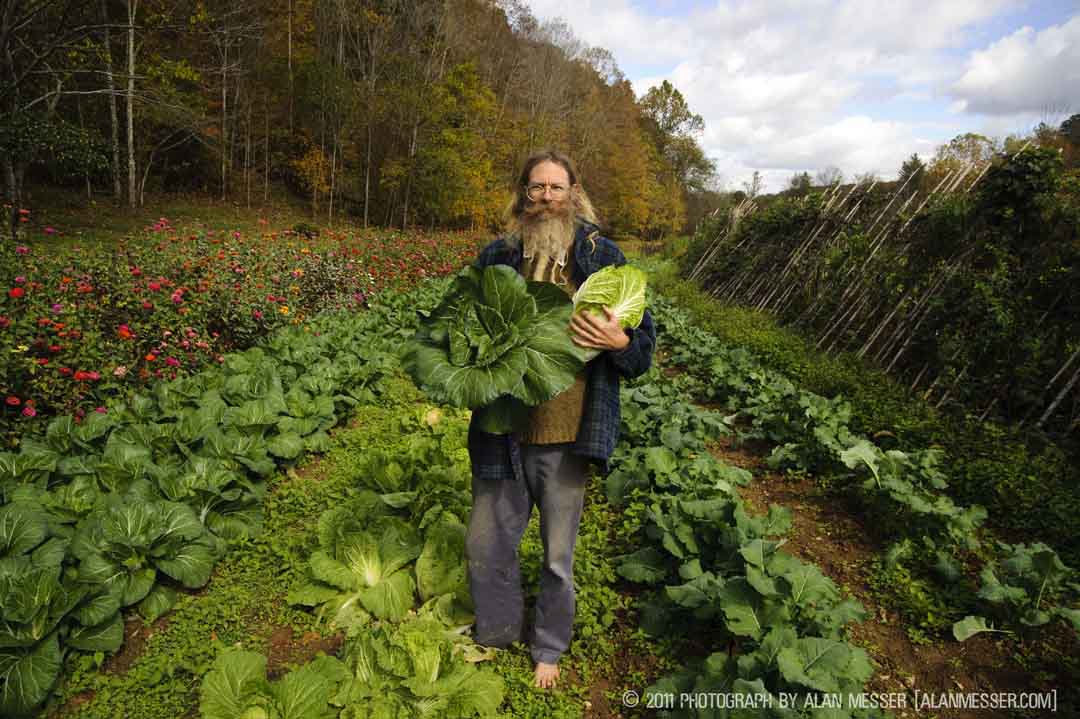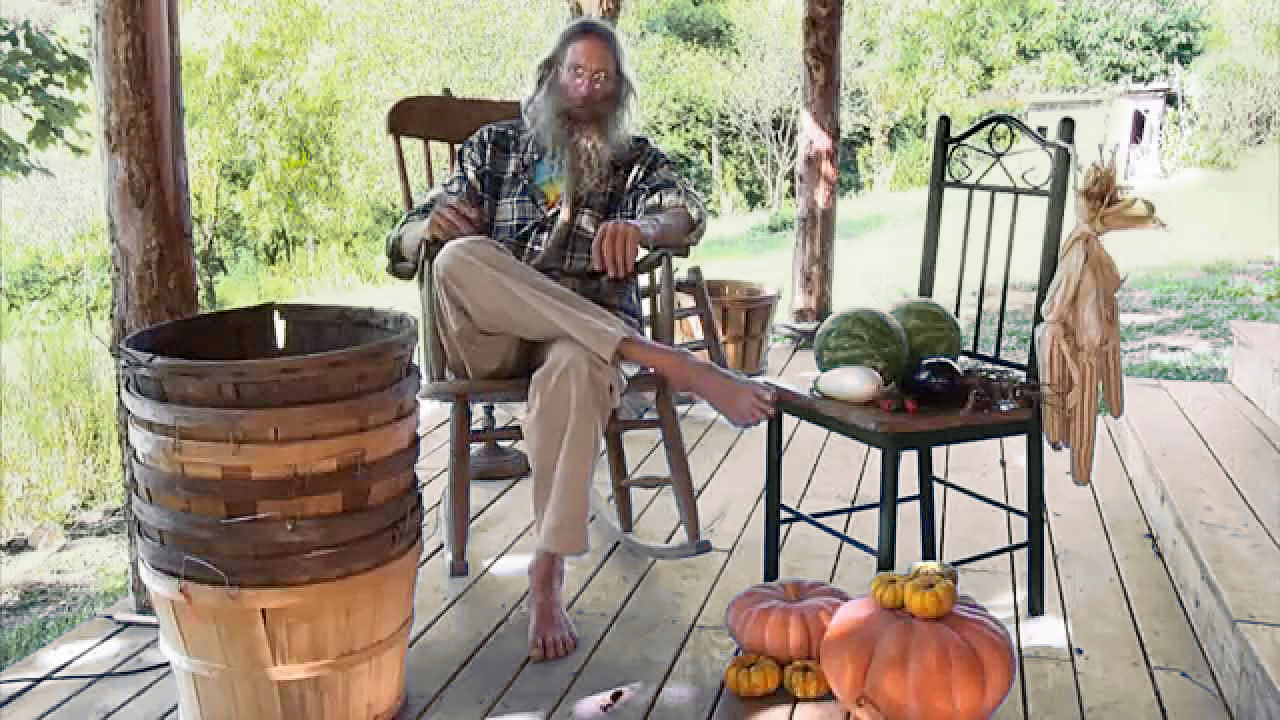Understanding plants and growth

Jeff Poppen, The Barefoot Farmer, showing what correct plant-care can give us.
JEFF POPPEN – Long Hungry Creek Farm – 10.20.11 – © Photograph by Alan Messer [alanmesser.com]
Biochemistry — by Jeff Poppen
barefootfarmer.org
I recently attended an advanced course in biochemistry. You may not want to read any further. On the other hand, if everything in the world can be reduced to a few unreducible elements, let’s try to learn a little about them.
- N, P, and K are the primary elements farmers fertilize their fields with.They stand for nitrogen, phosphorous and potassium, respectfully. Plants need these to grow and prosper and can get them in two ways: through the water the plant takes up or through the interaction of soil life.
- Artificial fertilizers are water soluble and are taken up in the plant when it needs water. Scientists have determined how much certain plants need and farmers spread this on their cropland. These chemicals inhibit the microbes that allow plants to get these elements naturally, so once you start using them you must continue to apply them.
In the life process of a plant, N, P, and K are actually not the primary elements.
- Sulfur is the catalyst for carbon chemistry. It’s presence on soil particle surfaces insures that interactions happen, because of its unusually versatile valence states which can range from -2 to +6. These numbers are the amount of electrons missing (-) or extra (+) in the outer shell of an elements atom, so sulfur really makes things happen.
- Boron, a component of clay, is released into the soil by the weathering of rocks. Sap pressure in the plant is created by boron. It also draws blood through the capillaries in animals. Without the suction of boron, nothing happens.
- Silicon combines with oxygen to form silica, the most abundant part of the earths crust. Sand is silica, and fungal hyphae are coated with it. Silicon forms cell walls, skin, membranes and other surfaces which transport fertilizing elements into the plant. It is obviously extremely important.
- Calcium grabs these elements and trucks them along the silicon highway into the plant. Calcium’s positive valence (+2) means that it easily grabs nitrogen and phosphorous and whisks them up into the plant. It is found in limestone as calcium carbonate and in bones as calcium phosphate. Our clay soils benefit from high calcium lime.
- Nitrogen is the first element in the periodic table with a missing electron, which is how calcium can get it up into the plant.
It bonds with many elements, even itself, and is almost 80% of air. When used as a nitrate fertilizer, the plant has to supply energy in the form of sugar to utilize it, making the plant highly susceptible to insects and diseases. Plants getting nitrogen from amino acids, through the life in the soil, don’t use up their sugar, taste sweeter and resist these problems naturally. - Magnesium is in the center of chlorophyll cells, like iron is in our blood cells. When calcium is lacking, magnesium makes the soils sticky and gummy when wet, and rock solid when dry. Balancing the positively charged cations in the soil (Ca, Mg, K, and Na) is a key to getting the ground loose and fluffy.
- In the soil, phosphorous is key to releasing energy, and in the leaf it is key to storing energy, it quickly becomes unavailable in a soil fertilized with nitrates, but becomes available in biologically active humus soils.
- Carbon bonds with itself and every other element, providing the framework for life chemistry, we inhabit a carbon-based planet. Plants get carbon from carbon dioxide in the air, so it is never deficient. We will reverse climate change by letting plants sequester atmospheric carbon into the soil, when we shift our farming methods from chemical to organic agriculture.Most soils have huge reserves of potassium, but in unavailable forms. Biological activity makes it readily available for plant growth. As an electrolyte, it opens and closes cell walls to allow nutrients in and keep wastes out.
Today we made a mineral-rich compost pile.
To a couple of yards of compost and rotted woods chips we added: 50 lbs of granite meal, 25 lbs of rock phosphate, 25 lbs of greensand, 25 lbs of diatomaceous earth, 25 lbs of wood ashes, 40 lbs of calcium sulfate, 9 boxes of borax, and a bag of worm castings.
We moistened it with barrel compost and stirred it up for an house, put the biodynamic preparations in it and covered it with a tarp. We will spread t thinly in a few weeks.
Life in the soil knows best how to grow healthy plants
We injure this life by using harsh fertilizers like nitrates, ammonia, acid phosphates, potassium chloride and potassium sulfate. The only reason to use these it to support the fertilizer industry, which also manufactures these for weapons.
If you’ve read this far, maybe life chemistry is a bit clearer.
Just follow USDA and old timers farming advice from 100 years ago, before the advent of the fertilizer/weapons industry. There you’ll learn how to promote the life in the soil by proper crop and animal rotations, cover crops, liming and composting the elements which make up our world can then do what they are intended to do, whether you try to understand them or not.
Visit the Barefoot Farmer for more interesting articles or to get great organic produce.

